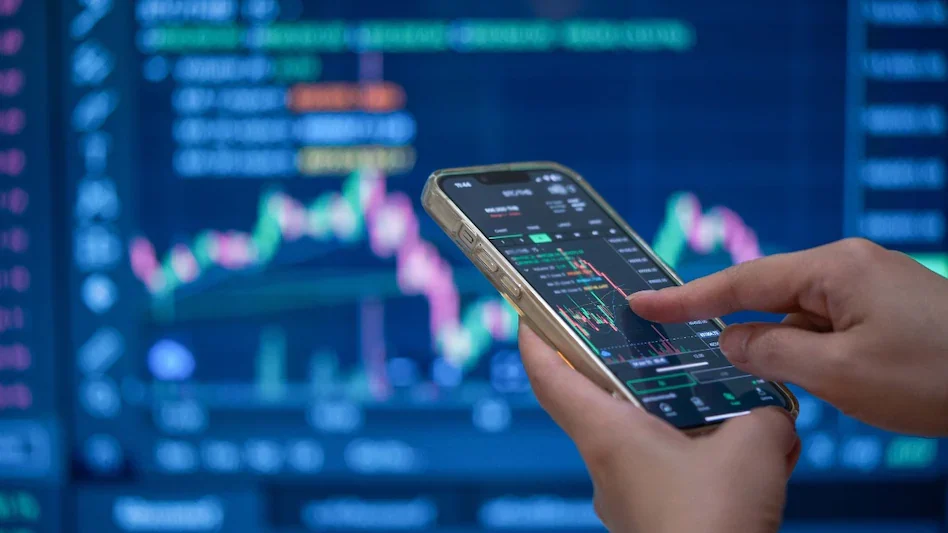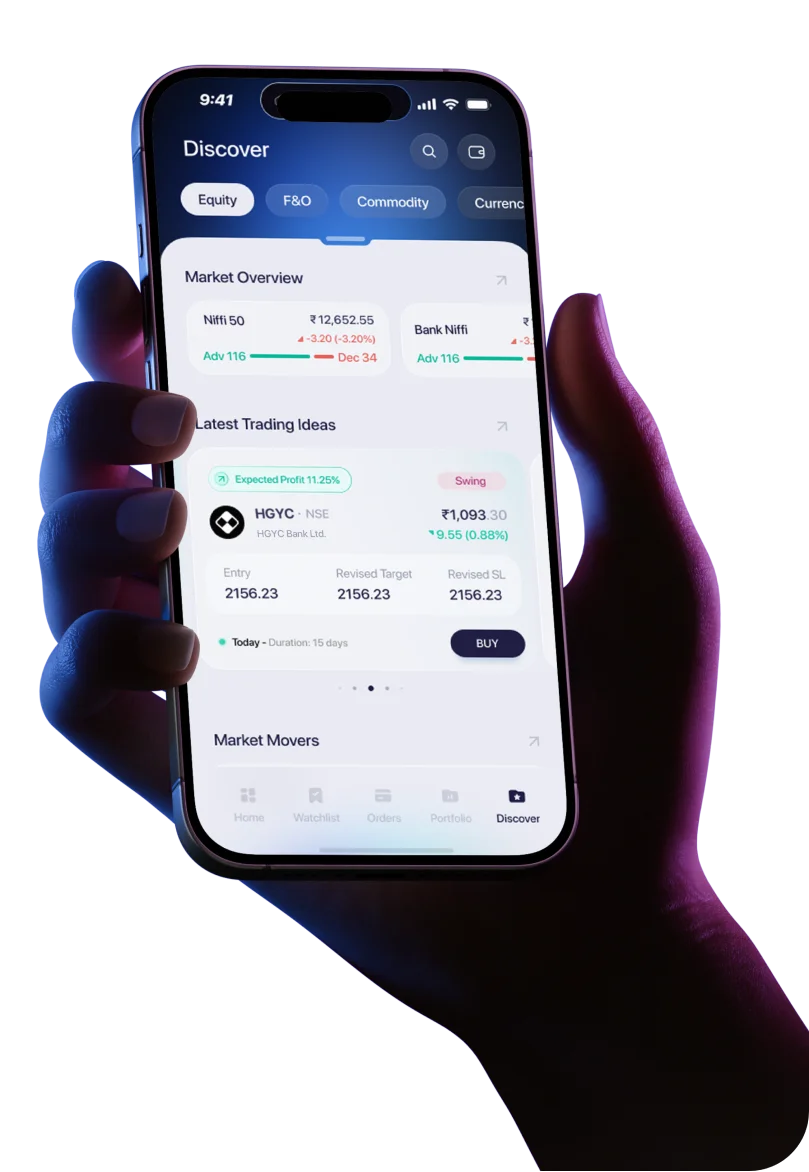Electricity prices in India often fluctuate due to demand, weather, and fuel costs (of coal and natural gas). This volatility creates price risk. It impacts the profitability of power companies, industries, and traders. The electricity futures offer a way to fix prices in advance and reduce this risk.
Let us understand what electricity futures are, who can use them, and their several benefits. Also, you will learn how to trade electricity futures and begin with SAMCO in three simple steps.
What are Electricity Futures?
Monthly Electricity Futures are financial contracts traded on an exchange. These contracts have enabled power trading in India. They allow buyers and sellers to fix a price today for round-the-clock electricity delivery (equivalent to 24/7) that will happen in a future month (28, 30, or 31 days).
Recently, the MCX (Multi Commodity Exchange of India) on July 10, 2025, and the National Stock Exchange (NSE) on July 14, 2025, launched Monthly Electricity Futures (ELECDMBL) contracts. On NSE, by 2:00 PM on the first day, trading volumes exceeded 4,000 lots (equivalent to more than 200 million units of electricity).
Want to know more? Let’s gain more clarity:
No Physical Delivery
These futures are not linked to physical delivery. No power is actually transferred between locations, and no transmission network is used. Instead, electricity futures India are financially settled. In them, participants only deal with the difference in price between the:
- Contract rate and
- Actual market rate
This avoids the need for transmission scheduling or physical grid access.
Settlement Based on Average Prices
Settlement is done using “unconstrained market prices”. For those unaware, these are average prices that do not factor in real-world limitations like:
- Grid congestion or
- Transmission capacity
This makes the MCX electricity futures contract simple and focused only on price risk.
Why are Electricity Futures Important?
Please note that electricity prices in India often change hourly due to various reasons. The ill effect? These unpredictable changes create financial risks for:
- Electricity producers
- Distributors
- Large consumers such as factories and data centers
Now, with the launch of electricity futures India these risks can be managed. How? These financial contracts let participants lock in prices in advance. This protects them from sudden price swings.
Let’s understand in detail why these contracts matter:
1. Hedge Against Price Risk
In India, producers (like power plants), distributors (like state electricity boards), and large consumers (like industrial units) are all exposed to fluctuating electricity prices. MCX electricity futures contracts allow them to secure a fixed price in advance.
2. Electricity Prices Are Highly Volatile
Electricity cannot be stored easily, and consumption varies widely. As a result, even small changes in demand or supply often cause strong price movements. This volatility in prices makes planning difficult for all market participants.
But now with electricity futures India, participants can protect themselves against this unpredictability by agreeing today on a price for electricity needed in a future month.
3. Volatility Due to Weather Conditions
Weather is a major factor in electricity demand and supply. High temperatures increase air conditioning use, while low rainfall affects hydropower. Similarly, in winter, heating demand rises in some regions.
These conditions suddenly raise or lower electricity demand, which affects prices. Electricity futures allow participants to reduce the financial impact of such weather-driven changes.
4. Demand and Supply Imbalance
If electricity demand suddenly exceeds supply, prices shoot up. Mostly, this happens during:
- Industrial growth periods or
- Unexpected grid issues
On the other hand, if supply exceeds demand, prices fall. Both scenarios create uncertainty. Through electricity futures India both buyers and sellers can now protect themselves from these imbalances by locking in future prices.
5. Fuel Price Fluctuations (due to Coal and Gas)
Be aware that a large share of India’s electricity is generated using coal and natural gas. When fuel prices rise due to global events or domestic supply issues, electricity prices also go up. This adds cost pressure on distributors and consumers.
Now, with the launch of electricity futures, these stakeholders can plan purchases in advance. This prevents them from getting hit by sudden price hikes.
6. Supports Price Discovery
Futures trading brings more buyers and sellers into the market. The benefit? Such a healthy participation leads to the discovery of a fair and competitive price. This increases market efficiency and trust.
How Do Electricity Futures Work?
MCX electricity futures are traded under the symbol “ELECDMBL.” This trading is regulated by SEBI. By using these contracts, buyers and sellers can fix the price of electricity for a future month (no need for physical delivery).
Interested? Let’s understand how to trade electricity futures in India:
- Exchange Trading
- Electricity futures are traded on NSE and MCX.
- The contract structure, trading rules, and settlement mechanisms follow a standard format approved by SEBI.
- Underlying Price
- The price of the futures contract is based on the Day-Ahead Market (DAM) price on the Indian Energy Exchange (IEX).
- This price reflects the average market value of electricity traded one day in advance
- Lot Size and Quotation
- In power trading India, prices are quoted per MWh.
- Each contract represents 50 megawatt-hours (MWh) of electricity.
- Tick Size
- The minimum price movement (tick size) is ₹1 per MWh.
- So, this means one tick equals ₹50 per lot (₹1 × 50 MWh).
- Settlement
- Contracts are cash-settled at expiry.
- There is no physical delivery of electricity.
- The final settlement price is based on the average DAM price for the contract month on IEX.
- Margins and Risk Control
- Margin requirements are calculated using the SPAN (Standard Portfolio Analysis of Risk) framework.
- For those unaware, this framework is applied across all derivative products.
Who Can Benefit?
Electricity futures are highly useful for different types of participants in the power market. Let’s see who can benefit:
Beneficiaries of Electricity Futures India | How Does it Help? |
Power Generators (thermal, solar, hydro, wind) |
|
DISCOMs (Distribution Companies) |
|
Industrial Consumers (factories, mines, data centers) |
|
Financial Traders and Investors |
|
Advantages of Electricity Futures
With the introduction of power trading in India, now market participants can easily manage the risks caused by changing electricity prices. These contracts significantly reduce uncertainties and improve financial control.
Let’s have a look at some of its primary advantages:
1. Protection Against Fluctuating Electricity Prices
Electricity prices change due to many factors, like:
- Demand
- Fuel costs
- Weather
Electricity futures contracts allow for fixing the price in advance. So, now buyers and sellers know exactly what they will pay or earn later. This reduces the financial risk of price swings.
2. No Need to Take or Deliver Power
These contracts are cash-settled, which means no actual electricity is transferred. You don’t need access to the power grid or a physical connection. Participants only pay or receive the price difference at the time of settlement.
3. Diversifies Investment Portfolio
For investors and traders, electricity is a unique asset class. Why? Because it behaves differently from:
- Stocks
- Bonds
- Commodities like gold
By adding electricity futures to a portfolio, market participants can now spread their risk. Furthermore, it even opens new ways to profit from price movements.
How to Start Trading Electricity Futures with SAMCO
Electricity futures in India are now available for trading on both MCX and NSE. Are you looking to manage electricity price risks or simply want to profit from new trading opportunities? Start trading electricity futures with SAMCO. Let’s see how you can get started:
Easy Step-by-step Onboarding in 3 Steps
Step I: Open a SAMCO Trading Account
- Visit the SAMCO sign-up page and fill out the online form.
- You’ll need to provide basic details like name, email ID, and phone number.
Step II: Complete KYC
- Upload your PAN, Aadhaar, and bank documents to complete KYC.
- Make sure to select the option for activating commodity trading, as electricity futures fall under this category.
Step III: Access Electricity Futures on the SAMCO Platform
- Once your account is active, log in to SAMCO’s trading platform.
- Search for the symbol “ELECDMBL” to view and trade electricity futures listed on MCX or NSE.
So, want to take advantage of India’s growing power market? Open Your Account Now and Start Trading Energy Futures Today!
FAQs
1. What is the minimum investment?
The minimum investment depends on the margin required to trade one electricity futures contract. As of now, margin requirements range between ₹5,000 to ₹10,000 per contract. As a tip, always check the latest margin rates on MCX or NSE before trading.
2. Is physical delivery involved?
No, electricity futures are cash-settled only! You don’t have to deliver or receive any actual electricity. When the contract ends, the difference between the price you agreed on and the average market price is settled in cash.
3. When can I trade?
Electricity futures are traded on MCX during regular market hours, which are from 9:00 AM to 11:30 PM (Monday to Friday).
4. Can individuals trade electricity futures?
Yes, individual traders can participate in electricity futures trading through registered brokers like SAMCO. All you need is a trading account + commodity segment activation + completed KYC.
Conclusion
Starting July 2025, electricity futures in India are available for trading on SEBI-regulated exchanges like MCX and NSE. These contracts allow power producers, distribution companies, and even individual traders to lock in future electricity prices today. Such a reservation of price allows them to better deal with price volatility in the energy market.
And the best part? Electricity futures in India are cash-settled. This eliminates the need for physical delivery or grid access. So, want to trade? With a reliable platform like SAMCO, getting started is simple!
You can open an account, complete KYC, and begin trading electricity futures within minutes. Don’t miss this great opportunity to trade a new asset class. Learn more and start trading electricity futures with SAMCO today.




 Easy & quick
Easy & quick
Leave A Comment?